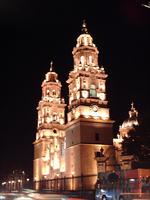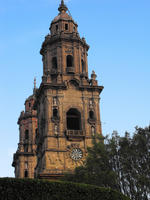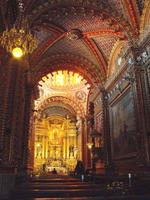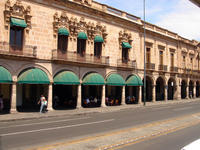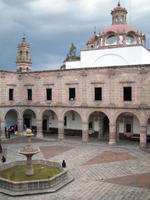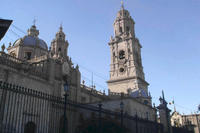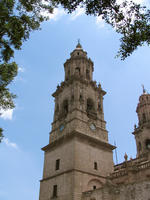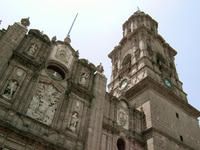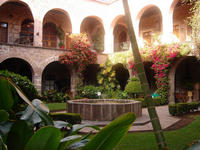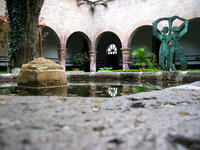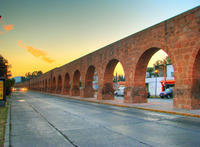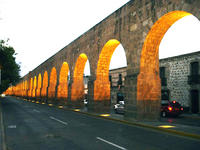You are in: North America -> Mexico -> Historic Centre of M... , and traditional search or Image Gallery will yield results of this site only
Historic Centre of Morelia
| Site number: | 585 |
|
| Type of site: | Cultural | |
| Date: | 16th century | |
| Date of Inscription: | 1991 | |
| Location: | North America, Mexico, Michoacan. Mairie de Morelia | |
Up to 75 images are shown here. Click on each for more details or on Image Gallery for more images.
Six official UN languages:
Arabic,
Chinese,
English,
French,
Russian,
Spanish
Other languages: Bulgarian, Catalan, Dutch, German, Italian, Norwegian-bokmål, Serbian, Swedish, Vietnamese
Other languages: Bulgarian, Catalan, Dutch, German, Italian, Norwegian-bokmål, Serbian, Swedish, Vietnamese
| Description: | Morelia, which was constructed in the 16th century, is an exceptional instance of urban planning that unites the concepts of the Spanish Renaissance with those of the Mesoamerican experience. Suitably tailored to the hill site’s slopes, today the streets still abide by the original layout. The town's architectural history is revealed through its roughly 200 historic buildings all built in the region's typical pink stone, bringing to light a masterly and eclectic mélange of the medieval character with elements of the Renaissance, Baroque and neoclassical styles. A number of important personalities of independent Mexico were born in Morelia, which has played a foremost role in the country's history. --WHMNet paraphrase from the description at WHC Site, where additional information is available. | |
| Morelia is the Capital of the Mexican state of Michoacán de Ocampo. The city is located at 19°42′00″N, 101°11′00″W with an elevation of 1 921 meters above sea level in the region of the Guayangareo Valley, surrounded by the Punhuato and Quinceo Hills. The City is the biggest in the state, and the population of the "conurbated area" was 642,314 people (608,049 in Morelia city), according to the census of 2005 (Segundo Conteo de Población y Vivienda 2005). The municipality of Morelia, of which the city serves as municipal seat, has an area of 1,199.02 km² (462.94 sq mi) and a population of 684,145. It includes such outlying towns as Morelos and Capula. The city's mayor is Carlos Macouzet Zamacona, from the conservative National Action Party (Mexico) In the 11 November 2007 elections, PRI stalwart Fausto Vallejo was elected mayor. This is will be his third non-consecutive term as presidente municipal. The metropolitan area includes the municipality of Tarímbaro, and had 735,624 inhabitants in the same year (2005). The city's historic downtown area which houses more than 1000 colonial buildings and churches became a World Heritage Site in 1991. --Wikipedia. Text is available under the Creative Commons Attribution-ShareAlike License. | ||
| Source: | http://whc.unesco.org/en/list/585 | |
| Reference: | 1. UNESCO World Heritage Center, Site Page. | |




